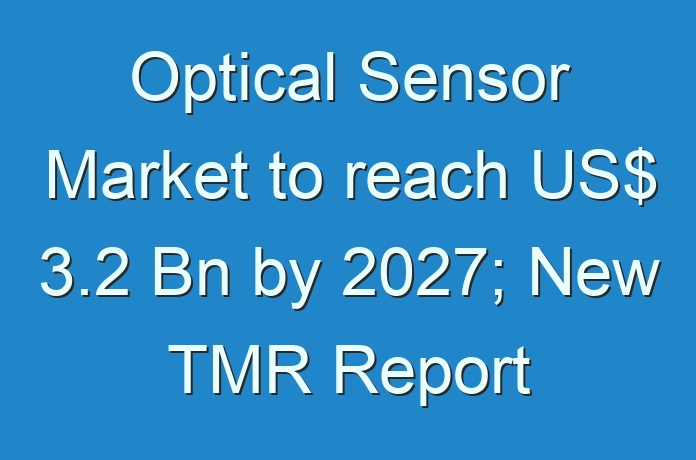
Need for Speed’ to Increase the Relevance of Optical Sensors in IoT Applications
The optical sensor market is charting an impressive growth, catalyzed by the quest of numerous end-use industries for a future-benign revolution. According to a latest study published by Transparency Market Research (TMR), the optical sensor market will record a value tantamount to ~US$ 1.4 Bn in 2019, and will advance at a CAGR of ~11% during 2019-2027. The need for high Internet speed to facilitate seamless operations of IoT devices is projected to exert a strong influence on the landscape.
Since the ‘price’ of optical sensors is a key competitive parameter, local players, especially those based in developing countries, tend to penetrate in developed countries and distinguish themselves by offering effective optical sensors – in terms of both, price and operations – which puts a price-reduction pressure on established players. However, the threat of counterfeit optical sensors is leading to shifting interest towards substitute sensors, with photoelectric sensors leading the pack.
Want to know the obstructions to your company’s growth in future? Request a brochure @ https://www.transparencymarketresearch.com/sample/sample.php?flag=S&rep_id=47118
Quest for Effective Communication to Catalyze Revenue from Numerous End-use Industries
The optical sensor market is a technology-intensive market, meaning, market players need to invest towards the development of highly-efficient optical sensors to cater to the demand of sensitive end-use applications such as medical, biometrics, and automotive. As industry 4.0 began gaining prominence, the relevance of optical sensors increased in manufacturing applications across industries, while the demand from early optical sensor adopters has fortified.
Among the early adopters of optical sensors, gains from consumer electronics are likely to remain lucrative, owing to the massive uptake in the demand for smartphones, smart watches, tablets, and voice assistant devices, among others. However, the penetration of biometrics technology to underpin security and tracking features is gaining exponential momentum, which can unlock market consolidation opportunities for market players. The future of the optical sensor market will gain a new dimension, as autonomy will propel the growth of the automotive industry, and optical sensors will make effective communication media to abate road-mishap instances.
Looking for exclusive market insights from business experts? Request a Custom Report
Extrinsic Optical Sensor – The Optical Sensor for Modern Applications
Traditional requirements ascending from end-use industries were limited to the use of sensors for gauging variables such as vibration, acoustic pressure, strain, acceleration, and rotation, which deemed intrinsic optical sensors as ideal components. However, since contemporary and futuristic electronic components shoulder the responsibility of operating numerous systems with procured intelligence, without human intervention, market players extend the capacities of optical sensors by improving their potency to measure temperature, flow, liquid level, pressure, etc., and transmit data to the designated module.
Such requirements have engendered extrinsic optical sensors at a lower price than intrinsic sensors. According to the study, the sales of intrinsic optical sensors are projected to remain high in terms of value; however, the relevance of extrinsic optical sensors will improve at a CAGR of ~11% during 2019-2027.
You May Also Like PRNewswire on Unified Communication-as-a-Service Market





